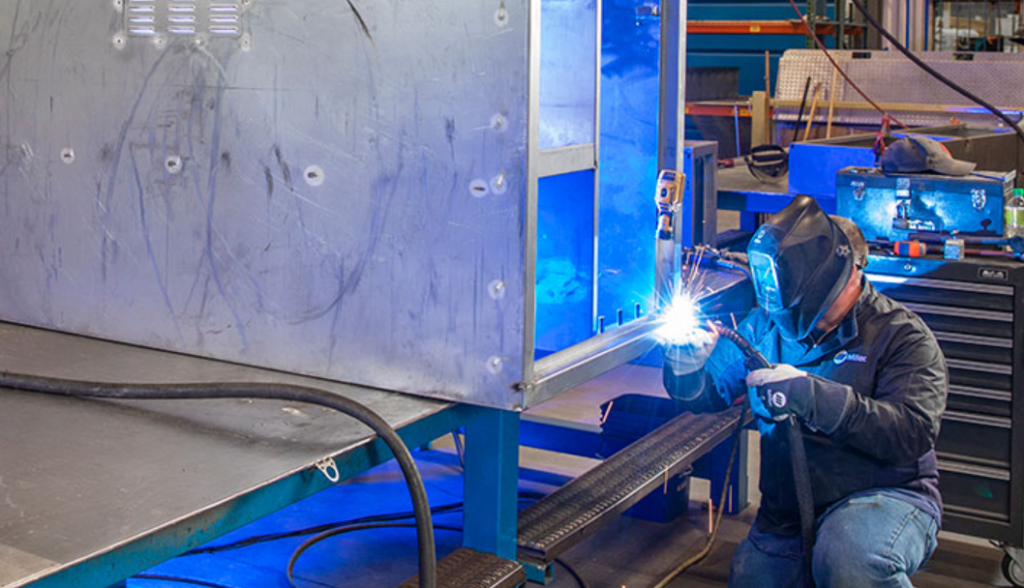A welding cable is a special electrical cable that transfers electricity from a welding power supply to the electrode. It is such an important component of a welding setup that even a minor cable failure can bring your entire welding job to a standstill.
The simplest solution to this is to order welding cable online. However, not all welders can afford the downtime and additional costs associated with replacing failed cables. Therefore, it is important to understand why a welding cable might fail and what you can do to avoid them.
Table of Contents
5 Common Causes of Welding Cable Failure
There are many reasons why a welding cable might fail. Here are some of the common causes you need to look out for and what you can do to prevent them.
-
Loss of Continuity
A welding cable generally has a single-core stranded copper conductor. When the copper conductor breaks, there is a loss of continuity. Repeated flexing of the cable and extreme tension are two of the main reasons for breakage of the copper conductor.
What Can You Do to Avoid It?
With proper care, you can easily prevent the severing of the copper conductor. If your welding job requires the cable to go through a series of bends, having a relaxed bend radius should prevent breakage. Also, refrain from tugging the cable forcefully and placing heavy objects.
-
Jacket Failure
Welding cables feature a thick thermoset jacket that insulates the stranded copper conductor core. The primary purpose of a jacket is to protect the cable from the external environment. Repeated physical, mechanical or chemical exposure can damage the jacket and expose the inner copper conductor, leading to cable failure. Some of the common causes of jacket failure are frequent abrasion against rough surfaces, cuts due to contact with sharp objects and cracking or swelling due to exposure to oils and other corrosive chemicals.
What Can You Do to Avoid It?
Depending on the class of cable you opt for, the thermoset jacket material may vary. Some of the most common jacket materials are Ethylene Propylene Diene Monomer (EPDM), Neoprene and Super Vu-Tron. Out of these three materials, Super Vu-Tron offers the best protection from abrasion, cuts and chemicals.
Opting for welding cable protected by Super Vu-Tron jackets can help you avoid jacket failures. Also, consider keeping your work environment clear of sharp objects and chemicals. If you have to route your welding cable through rough surfaces, consider placing a sheet underneath to prevent abrasive damage.
-
Corkscrewing
Electric cables are prone to corkscrewing over time. Corkscrewing is a phenomenon where the cable twists and deforms itself due to the electromagnetic forces generated by high currents flowing through it.
Although this phenomenon is more prevalent in multi-core copper conductor cables, welding cables may also occasionally exhibit this effect. Corkscrewing interferes with the current carrying ability of a cable and can lead to its failure.
What Can You Do to Avoid It?
Flexible welding cables are often more prone to the corkscrewing effect. Opting for a more rigid and thicker cable should help reduce the effect. Additionally, you can also use cable management techniques like using cable supports and clamps to reduce the twisting motion.
-
Current Overload
Welding cables are rated to withstand only a certain amount of voltage and ampacity. Exceeding the rated figures can lead to excessive heat build-up, which can damage the cable integrity and cause it to fail. In some cases, the extreme heat can burn through the copper conductor and jacketing material, becoming a fire hazard.
What Can You Do to Avoid It?
The easiest solution to avoid current overload is to use heavy-duty cables that have high voltage and ampacity ratings. Although this can increase the cost significantly, it will ensure longevity and effectively prevent cable overload.
-
Short Circuit
With frequent and repeated use, the copper strands within a welding cable can snap. Since these severed strands tend to be sharp, they can pierce through the jacketing material and come into contact with the external environment. This can lead to cable failure due to a short circuit. Sometimes, a short circuit may also happen if a broken copper strand comes into contact with another broken strand.
What Can You Do to Avoid It?
Refraining from putting the welding cable through physical stress should prevent short circuits due to severed copper strands. Also, physically checking the integrity of the cable periodically can help you detect potential short circuits before they happen.
Conclusion
Since welding cables are designed to carry high currents from the power source to the equipment, they generally feature durable insulation designed to withstand rugged work conditions. That said, to ensure longevity, it is important to properly care for your cables. Thoroughly inspect and test the cables for electrical and insulation integrity. In case you detect any issues, replace them immediately.

